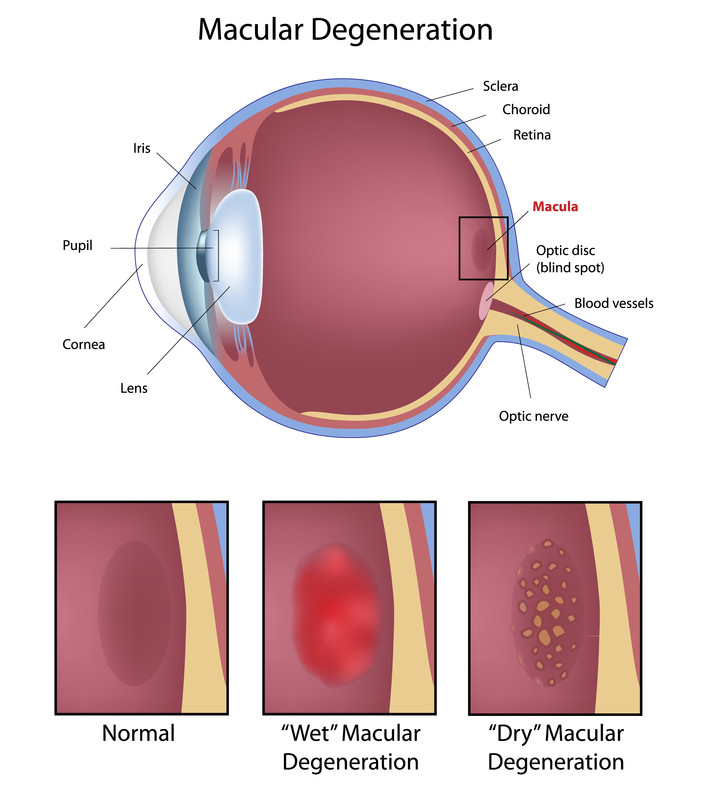
Age-Related Macular Degeneration
Age-Related Macular Degeneration (AMD) is the leading cause of severe vision loss in adults over age 50. The Centers for Disease Control and Prevention estimate that 1.8 million people have AMD and another 7.3 million are at substantial risk for vision loss from AMD.
AMD destroys the sharp, central vision needed to see clearly. This loss can affect daily activities like reading text on the computer, phone, or newspaper; driving; and watching television.
Here are some facts about AMD:
- AMD comes in both wet and dry forms.
- The wet type is the more advanced and damaging form.
- Most dry forms of AMD do not progress to the wet form, but the wet form can lead to severe and permanent loss of central vision.
- If AMD does progress to the wet stage, therapies such as injections and laser treatments can help.
- People with a family history of AMD are at greater risk of AMD.
- AMD affects whites more often than other races and ethnicities, such as African Americans and Hispanics.
- Smoking, high cholesterol, and high blood pressure are risk factors for AMD.
In its early stages, the following signs of macular degeneration can go unnoticed.
- Gradual loss of ability to see objects clearly
- Shape of objects appears distorted.
- Straight lines look wavy or crooked.
- Loss of clear color vision
- A dark or empty area in the center of vision
Vision screening is an efficient and cost-effective method to identify adults with visual impairment or eye conditions so that a referral can be made to an appropriate eye care professional for further evaluation and treatment. An early diagnosis means early treatment, so it may help to limit or at least slow the vision loss.
Sources: Centers for Disease Control and Prevention, American Optometric Association
SUGGESTED VISION SCREENERS INCLUDE:
- Testing components of visual function like high-contrast acuity and color vision
- Tests with or without the glare condition
